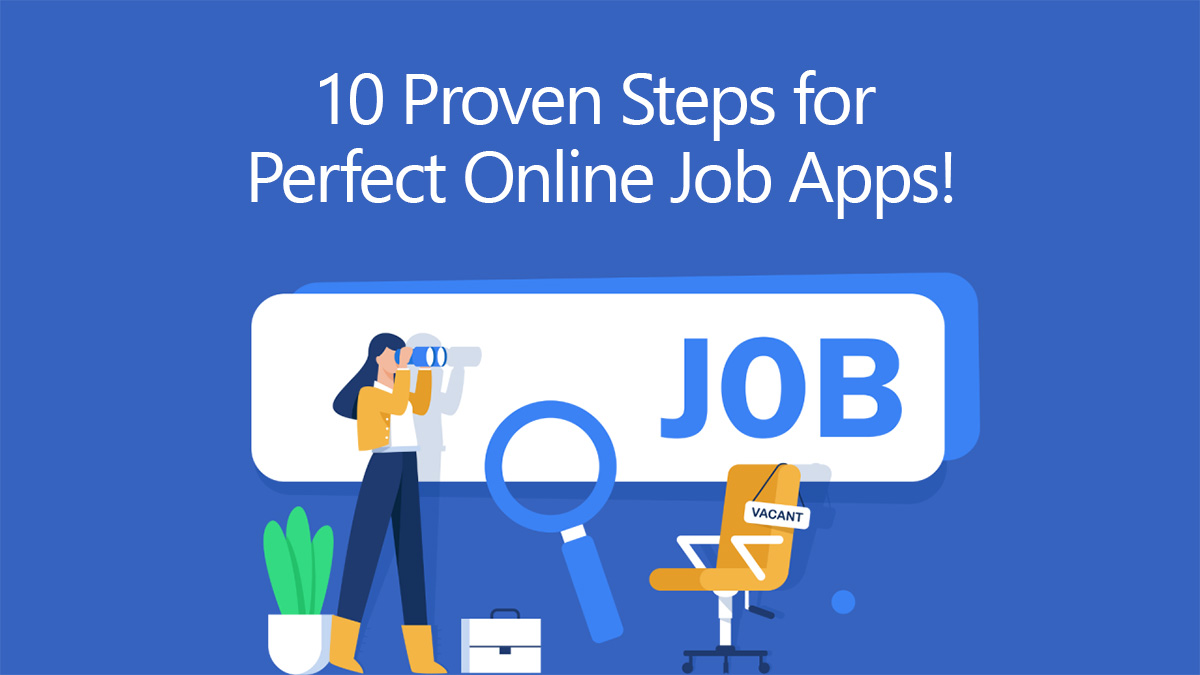
Are you looking for a new job and want to stand out from the moment your CV lands in the recruiter’s inbox? Follow these 10 essential steps to ensure your online job application is polished and professional.
Recruiters are flooded with applications. To rise above the noise, your CV needs to be a clear, quick read. Make it easy for them to spot your qualifications and potential.
Your email address should reflect a professional image. Avoid playful or informal addresses that might undermine your credibility. Opt for an email address that conveys professionalism.
Examples of Professional Email Addresses:
Avoid:
Selecting the right file format is crucial for making a good impression. The format you choose can affect how your CV is viewed and whether it maintains its intended layout.
PDF: Preferred for CVs because it preserves layout and formatting, ensuring your document appears as intended on any device. It is universally accessible and doesn’t require special software.
Word (DOC/DOCX): Although widely used, Word files may require the viewer to have Microsoft Office installed and are less reliable for consistent formatting.
JPG or Other Image Formats: Not ideal for CVs as they display content as a flat image, making text unselectable and uneditable. Important details like your contact information or hyperlinks cannot be copied from an image file.
Recommended Formats: PDF, Word
Avoid: Image formats like JPG
The way you name your files reflects your attention to detail and professionalism. Avoid using vague or dated filenames that may confuse the recipient. Use a clear and concise format that includes your name and the position you’re applying for.
Proper File Naming Examples:
Avoid:
The subject line of your email should be informative and relevant to ensure your application is easily identifiable. Avoid sending emails with no subject line or vague titles. Follow any specific instructions provided in the job ad.
Best Practices:
A well-crafted cover letter can significantly impact your application. Choose a strategy based on the number of jobs you are applying for:
If Applying for 5 or Fewer Jobs: Research each company thoroughly and tailor your cover letter to reflect why you are interested in working there. Customize each letter to highlight how your skills and experiences align with the company’s specific needs.
If Bulk Applying: Focus on your qualifications and provide a general overview of your skills and experiences. Avoid detailing how your background fits the specific requirements of each role.
Keep It Concise: Limit your cover letter to 3-4 paragraphs and ensure it does not exceed one page. Ideally, aim for half a page.
Key Elements to Include:
While specifics may vary by country and culture, here’s a general guideline for international job applications:
Must-Have Information:
Nice-to-Have Information:
Not Necessary:
Provide references only when requested by the employer after the initial correspondence. You can mention in your cover letter or CV that references are available upon request.
To avoid overwhelming the recipient, include only the most relevant documents: your CV, cover letter, and any requested supporting materials. Avoid attaching unnecessary files or very large files. If you need to send a video, consider uploading it to YouTube or Vimeo and sharing the link.
If you haven’t heard back within the timeframe specified in the job ad (or after a reasonable period, such as 5 to 10 working days if no timeframe is provided), send a polite follow-up email to inquire about the status of your application.
Ensure your contact details are included in your CV and are correct.
By following these 10 essential steps, you’ll enhance your chances of making a positive impression and advancing in the hiring process. Good luck with your job search!
online job application
job application tips
resume
cover letter
job search
career advice
hiring tips
CV formatting
professional email address
file naming conventions
cover letter essentials
job application checklist
application follow up
resume file formats
job search advice
professional resume
effective job application
job application best practices
online job search
resume tips
job application errors to avoid
job application organization
job applica

Примите участие в нашем бесплатном тесте на определение уровня английского и получите мгновенные результаты по тестам по грамматике, чтению, аудированию и разговорной речи на английском языке.